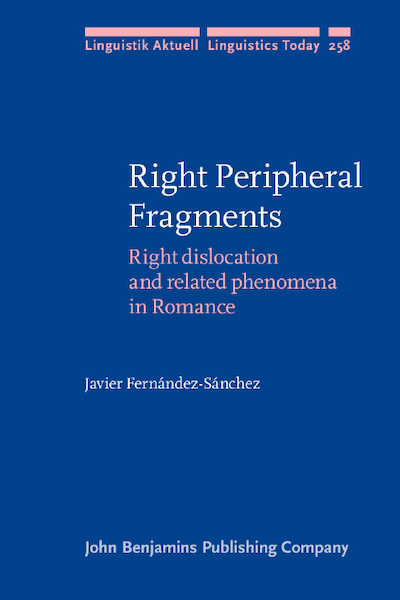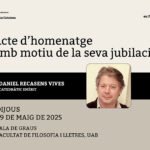Fernández-Sánchez (2020). Right Peripheral Fragments. Right dislocation and related phenomena in Romance

Autors:
Javier Fernández SánchezTítol:
Right Peripheral FragmentsEditorial: John Benjamins
Data de publicació: Febrer del 2020
ISBN13: 9789027261694
Més informació
In recent years, a number of authors (De Vries 2009, Truckenbrodt 2015, Ott and de Vries 2016, inter alia) have defended that right dislocations (RD) should be treated as bisentential structures, where the “dislocated” constituent is actually a remnant of a clausal ellipsis operation licensed under identity with an antecedent clause. Although Romance RD is a fertile area of research, the consequences of the biclausal analysis remain unexplored in these languages. This monograph intends to fill this gap. Adopting this approach not only solves some issues that have always been at the core of dislocation structures in general; it also allows us to uncover novel sets of data and to provide straightforward explanations for well-known generalizations. Further, it brings RD along with a set of phenomena which are structurally very similar, like afterthoughts or split questions, which have been independently argued to display a bisentential structure. Under alternative, monoclausal approaches to RD, the striking similarities between these phenomena must be rendered anecdotal.






